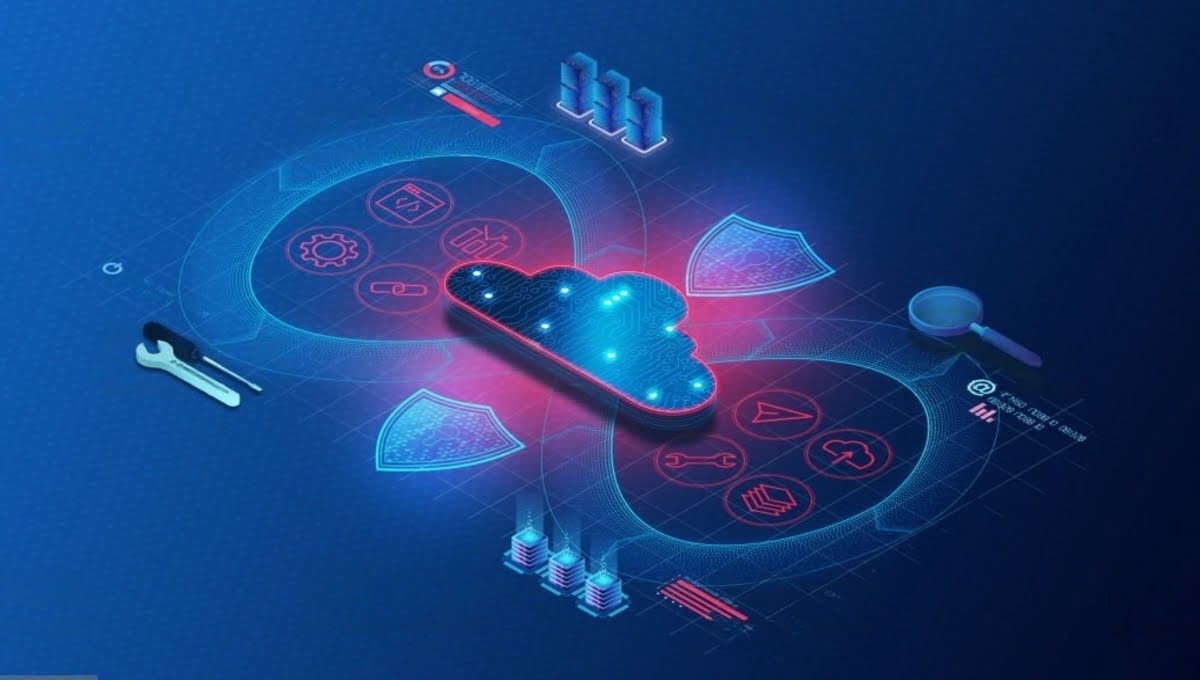CLOUD COMPUTING
Cloud Native and Microservices ? Know aout it

Within the quickly changing field of software development and implementation, two terms have gained significant attention: “cloud native” and “microservices.“ Both concepts offer innovative approaches to building and running applications, but they have distinct characteristics that set them apart. In this article, we’ll delve into the nuances of cloud native and microservices architectures, highlighting their differences, benefits, and use cases.
Cloud native and microservices architectures are both transformative approaches to software development, but they have distinct purposes and applications. Cloud native focuses on building applications specifically for the cloud environment, while microservices emphasize the modularization of software components.
These strategies can be used individually or in tandem, depending on the organization’s goals and requirements. By understanding their differences and benefits, businesses can make informed decisions to optimize their application development and deployment strategies.
Introduction
In the realm of modern software development, the emergence of cloud technologies has revolutionized the way applications are built and deployed. Two terms that frequently arise in discussions about software architecture are “cloud native” and “microservices.” While these terms might seem interchangeable, they actually represent different paradigms with their own unique attributes.
Understanding cloud-native Native Architecture
Defining Cloud Native
Cloud native refers to an approach in which applications are designed and developed specifically for cloud environments. It’s not merely about running existing software in the cloud; rather, it involves rethinking how applications are built to take full advantage of cloud capabilities.
Key Features of Cloud-Native Applications
Cloud-native applications exhibit several key features, including containerization, dynamic orchestration, and automated scaling. Containers allow applications and their dependencies to be packaged and isolated, ensuring consistency across various environments. Dynamic orchestration tools, such as Kubernetes, enable seamless management of containerized applications, ensuring high availability and fault tolerance.
Benefits of Cloud-Native Architecture
The benefits of adopting a cloud-native approach are manifold. Organizations can achieve greater scalability as cloud environments allow for rapid provisioning of resources based on demand. Additionally, cloud native applications can be updated and scaled without causing downtime, leading to enhanced reliability and user satisfaction.
Examples of cloud-native applications:
- Netflix
- Amazon
- Spotify
- Airbnb
- Uber
Understanding Microservices Architecture
Defining Microservices
Microservices is an architectural style that advocates for breaking down applications into smaller, loosely coupled services. Each service is responsible for a specific business capability and can be developed, deployed, and scaled independently.
Core Principles of Microservices
Microservices architecture is built on principles such as single responsibility, isolation of concerns, and decentralized data management. Each microservice can be developed using different technologies and can evolve independently, allowing for flexibility and agility in the development process.
Advantages of Microservices Architecture
The advantages of microservices include improved fault isolation, easier maintenance, and the ability to adopt new technologies without overhauling the entire application. Furthermore, microservices enable teams to work on different services simultaneously, speeding up development and deployment cycles.
Examples of microservices-based applications:
- eBay
- PayPal
- Twitter (X)
- Etsy
- Amazon
Distinguishing Between Cloud Native and Microservices
Conceptual Differences
While both cloud native and microservices aim to leverage the benefits of the cloud, they address different aspects of the application lifecycle. Cloud Native focuses on the development and deployment process, optimizing applications for cloud environments.
On the other hand, microservices pertain to the architectural style, emphasizing the decomposition of applications into modular services.
Focus on Architecture vs. Deployment
Cloud native is primarily concerned with the deployment and operational aspects of applications, whereas microservices are more concerned with the internal structure of the application. Cloud-native applications can be built using a microservices architecture, but not all microservices-based applications are inherently cloud-native.
Scalability and Flexibility
Cloud-native applications can be inherently scalable due to their design for cloud environments, while microservices offer scalability at the service level. Microservices provide the advantage of individually scaling services that experience higher demand, optimizing resource utilization.
key differences between cloud native and microservices:
| Characteristic | Cloud native | Microservices |
|---|---|---|
| Architectural style | Can be monolithic or microservices | Must be microservices |
| Deployment platform | Can be deployed on-premises or in the cloud | Typically deployed in the cloud |
| Key principles | Scalable, resilient, efficient, and easy to deploy and manage | Small, independent, loosely coupled |
| Common practices | Containerization, continuous integration and continuous delivery (CI/CD), container orchestration | API-first design, autonomous teams, decentralized governance |
In general, cloud native is a broader concept than microservices. Cloud-native applications can be built using a variety of architectural styles, including microservices. However, microservices are a key architectural style for cloud-native applications.
Use Cases for Cloud Native and Microservices
Ideal Scenarios for Cloud-Native Applications
Cloud-native architecture is ideal for applications that need to be developed, deployed, and scaled quickly and efficiently. Applications with varying and unpredictable workloads can benefit from Cloud Native’s auto-scaling capabilities.
When to Opt for Microservices Architecture
Microservices are a suitable choice when the application’s functionalities can be divided into distinct, manageable services. This is especially beneficial for large, complex applications where different services can be developed and maintained independently.
Instances of Combined Approach
In some cases, a combination of cloud-native and microservice architectures can be advantageous. For instance, a cloud-native application could be built using microservices to ensure modularity and flexibility.
Challenges and Considerations
Challenges of Adopting Cloud Native Practices
Migrating to a cloud-native approach may require rewriting existing applications or rethinking development processes. It can also involve a learning curve for development and operations teams.
Addressing Microservices Complexity
While microservices offer benefits, they also introduce complexity. Managing communication between services, ensuring data consistency, and monitoring distributed systems require careful planning and tools.
Ensuring Seamless Integration
Integrating various services and components, especially in a microservice-based environment, can pose challenges. Proper API design and management are crucial to ensuring smooth interactions between services.
Benefits of Combining Cloud Native and Microservices
Leveraging Synergies
Combining cloud native and microservices approaches can lead to synergies. Cloud-native practices facilitate deployment and scaling, while microservice architecture enhances development speed and maintainability.
Enhancing Scalability and Efficiency
The combination allows for granular scalability, with cloud-native practices ensuring the availability of resources and microservices offering service-level scaling, resulting in optimized resource utilization.
Enabling Continuous Deployment
Cloud natives and microservices can work together to enable continuous deployment. Changes to individual services can be deployed independently, reducing the risk of disrupting the entire application.
Conclusion
In the dynamic world of software architecture, the distinction between cloud natives and microservices is pivotal. While both approaches offer innovative ways to design, develop, and deploy applications, they serve different purposes. Cloud native optimizes applications for cloud environments, while microservices break down applications into manageable services. Depending on an organization’s goals, these strategies can be employed individually or jointly, leading to improved scalability, efficiency, and agility.
FAQs
Can a microservice-based application be considered cloud-native?
A microservices-based application can be cloud-native if it is designed to run efficiently in a cloud environment, taking advantage of cloud-native features.
What challenges might arise when transitioning to a microservices architecture?
Challenges include managing inter-service communication, ensuring data consistency, and orchestrating services effectively.
Is it possible to adopt a cloud-native approach without using microservices?
Yes, cloud-native practices can be applied to monolithic applications as well, although microservices can enhance scalability and maintainability.
What role does Kubernetes play in cloud-native applications?
Kubernetes is a powerful tool for orchestrating and managing containerized applications, which are a key component of cloud-native architectures.
Can a traditional, on-premises application benefit from a microservices architecture?
While microservices were born in the cloud era, they can be adapted to on-premises environments, but the benefits may vary based on the context and requirements.

 FUNDAMENTAL2 months ago
FUNDAMENTAL2 months agoHow Cloud Computing Improving Customer Service Processes

 FUNDAMENTAL8 months ago
FUNDAMENTAL8 months agoWhat is cloud computing? A Comprehensive Guide

 FUNDAMENTAL8 months ago
FUNDAMENTAL8 months agoEvolution of Cloud Computing

 FUNDAMENTAL3 months ago
FUNDAMENTAL3 months agoIaaS PaaS and SaaS in cloud computing

 FUNDAMENTAL4 months ago
FUNDAMENTAL4 months agoHow can Cloud Technology Help Small Businesses ?

 CLOUD COMPUTING2 months ago
CLOUD COMPUTING2 months agoWhat Is VlAN and VSAN In Cloud Computing?

 FUNDAMENTAL2 months ago
FUNDAMENTAL2 months agoWhich is a fundamental attribute of cloud computing?

 CLOUD COMPUTING2 months ago
CLOUD COMPUTING2 months agoHow to Make Your Own Cloud Storage : A Step-by-Step Guide









